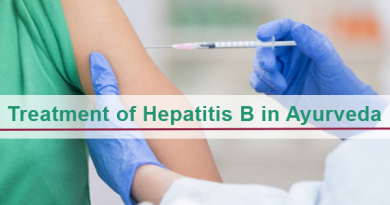Papaver Somniferum (Ahiphena) – Health Benefits and Medicinal Properties
Introduction
Papaver somniferum was formally described by Carl Linnaeus in 1753 in his seminal publication, Species Plantarum. He was a Swedish botanist. Papaver somniferum (Ahiphena) is commonly known as “Breastseed poppy” or “Opium poppy”. It is a valuable ornamental plant from which opium and poppy seeds are derived. It is said that in the late 1830s, first and Second Opium wars between China, and the British Empire and France took place, The Chinese attempted to stop western traders from smuggling and selling opium into their country from the large crops which were grown in India. As a result, the British had a deep trade deficit with China, and the British-owned Indian opium sale helped to balance it.

Description
It is an annual herb, which is erect and it is covered by latex and smooth surface. It grows about 100 cm tall. The plant gives a greyish – green appearance, stems and leaves are covered with hairs. Large lobed leaves are present. June and August are its blooming months. Flowers have four white, mauve or red petals with 30-100 mm diameter, Base maybe sometimes covered with dark markings. The fruit is like a rounded capsule which is usually hairless. It has many species and subspecies but they all are different from each other in many aspects like – the color of seeds, the color of a flower, number and shape of petals, production of opium and quantity of fruits and flowers.
Cultivation
It is often cultivated in all countries. Asian minor is said to be its native range. It is said that it must have come from China and India through the 8th century. China, the Balkan and Asia minor are its main cultivated areas. If we will make the incision over the capsule of an unripened poppy plant, then milk will come which upon spontaneous evaporation will become thick, This is called Poppy.
Classification
Kingdom – Plantae
Family – Papaveraceae
Genus – Papaver
Species – P. Somniferum
Botanical Name – Papaver Somniferum
English Names – Opium Poppy, Breastseed Poppy
Sanskrit Name – Khaskhasaphala
Hindi Name – Khaskhas
Therapeutic Uses of Papaver Somniferum
It has a variety of therapeutic uses –
- Seeds are used in fever, thirst, to relieve irritation and inflammation of the stomach.
- Various cooling medicines are made by using its root.
- The powder is used in case of liver problems.
- Used as a tonic because of stimulating properties present in the root.
- Roots of plants are also used to make an infusion which is used as a fever relieving medicine.
Nutrient Composition
Poppy seeds contain a large number of carbohydrates, protein, fat fiber and moisture. It contains around 25 alkaloids like morphine, codeine, narcotine, narcine, and papaverine. It also contains minerals like calcium and phosphorus. Oxalic acid and opium are found in its sap. They are rich sources of fatty acids, especially omega-3 fatty acids. Diastase, lipase, and nuclease enzymes are also present in it.
Major Alkaloids Found in Papaver Somniferum
1. Morphine
Pharmaceutical Use – It has analgesic and narcotic action.
2. Codeine
Pharmaceutical Use – It has analgesic and antitussive action.
3. Thebaine
Pharmacological Use – It is a precursor of opioids.
4. Narcotine
Pharmacological Use – It has antitussive action.
5. Papaverine
Pharmacological Use – It has anti-spasmodic action.
Ayurvedic Properties of Papaver Somniferum
Rasa – Kashaya, Tikta
Taste – Astringent, bitter
Guna – Laghu, Ruksha, Suksham, Vikashi, Vyavayi
Virya – Ushna
Vipaka – Katu
Physical property – Light, dry, minute, spreading, expanding
Potency – Hot
Metabolic property (After Digestion) – Pungent
Part Used
The whole plant has many uses but mainly seed, seed oil, exudate from fruit and unripe seed capsule are used for medications.
Papaver Somniferum Seeds
They are white, brown, yellow and nearly black, obtained from the capsules. They are pleasant and nut-like in taste and odor. After the successful drying of the capsule on the plant, the poppy seeds can be collected. They have a reticulate surface. It is also known as Poppy Seeds.
Health Benefits of Papaver Somniferum
This plant has various health benefits –
- Digestion – Poppy seeds are very useful to keep our digestive system healthy.
- Insomnia – 30 grams of poppy seed milk mixed with sugar is very beneficial in treating insomnia, Poppy oil can also be used.
- Dry itching – When poppy seeds are mixed with lime juice in a paste form when this paste is applied over the affected area, relief occurs.
- Dysentry – Seeds are mainly used. Saute one-fourth teaspoon of poppy seeds in honey till it becomes golden brown. Take it twice a day but not for more than three days as it has a sedative effect.
- Burning Sensation and Heat – Poppy root paste when applied externally over the affected area helps to relieve burning sensation.
- Breast Cancer – Poppy seeds are rich in oleic acid, hence used in breast cancer treatment.
- Joints Pain – It is also effective in joints pain, gout and arthritis.
- Heart Attacks – Poppy seeds oil is very useful.
- Energy – As they have high carbohydrate content so useful in enhancing our energy.
- Muscular and Other Pains – It is useful in neuralgic and muscular pain. It is also helpful in relieving painful piles. It gives relief in tooth pain when opium centigram is placed in the hollow of the tooth.
Effects on Dosha
This herb is Madakari, Grahi (absorbent), hara and, Sukrastambhakswashar (good for respiratory tract), nidrajanan (sedative), balya (strengthening), vrishya (aphrodisiac), shoolprashmana (pain relieving), It is best used in kasa, atisara, jvaraand nidranasha.
Ayurvedic Products from Papaver Somniferum
- Nidrodayavati for various disorders
- Kaminividrawanras
- Dughdavati
- Nidrodya rasa
Dosage
Morphine (during pain, acute angina) – 0.2 gm
Codeine – 0.5 gm
Khas Khas – 1-3 gm
Poppyseed Oil – 1-4 drops
Fatal Dose – If more than 2 gm of Morphine used, it causes cardiac arrest, drowsiness, respiratory arrest and finally death
Cautions
Opium should only be used in prescribed doses because if the dose exceeds it may result in various complications. Children should not be given opium. It should be avoided during pregnancy and in the case of kidney disease.




